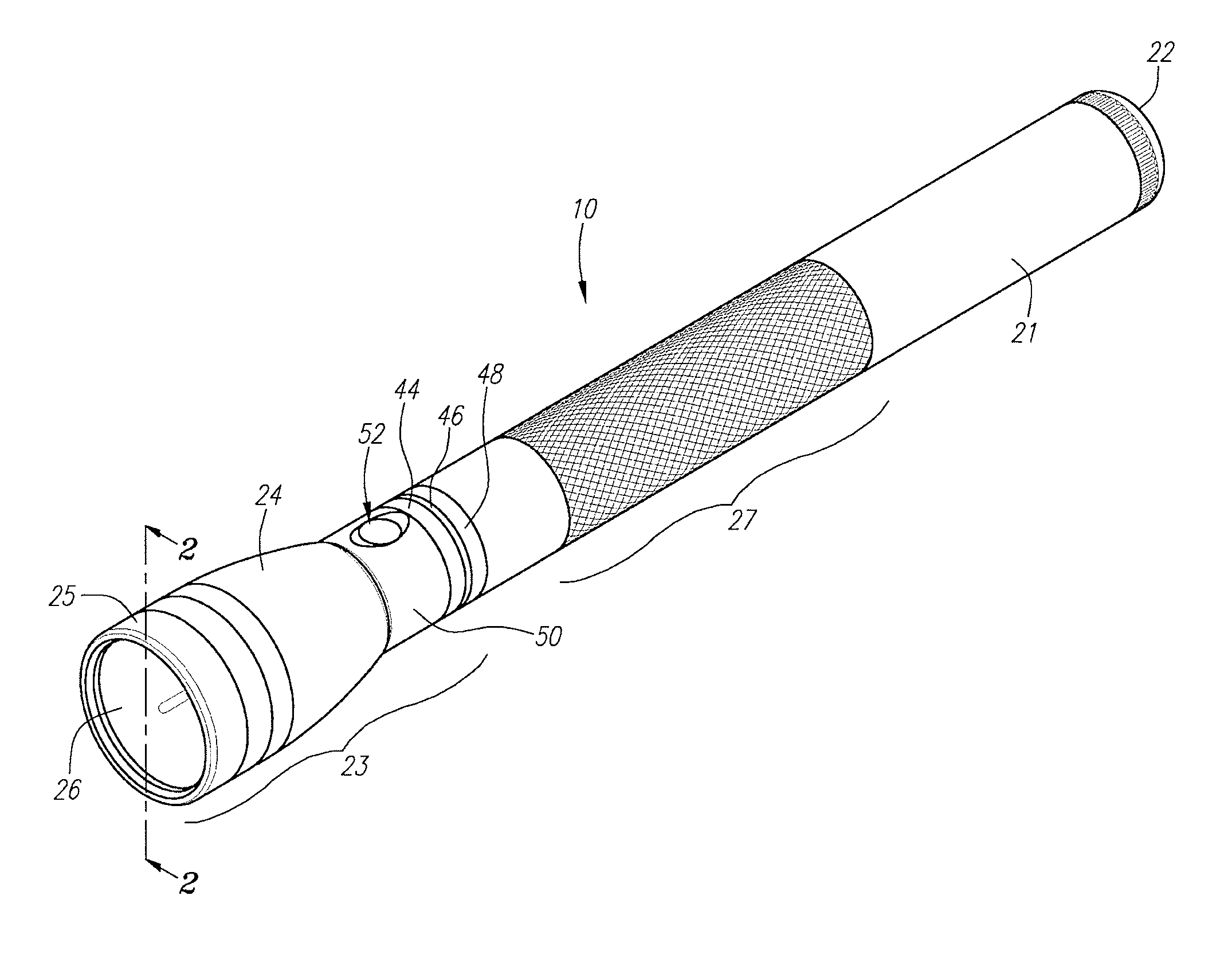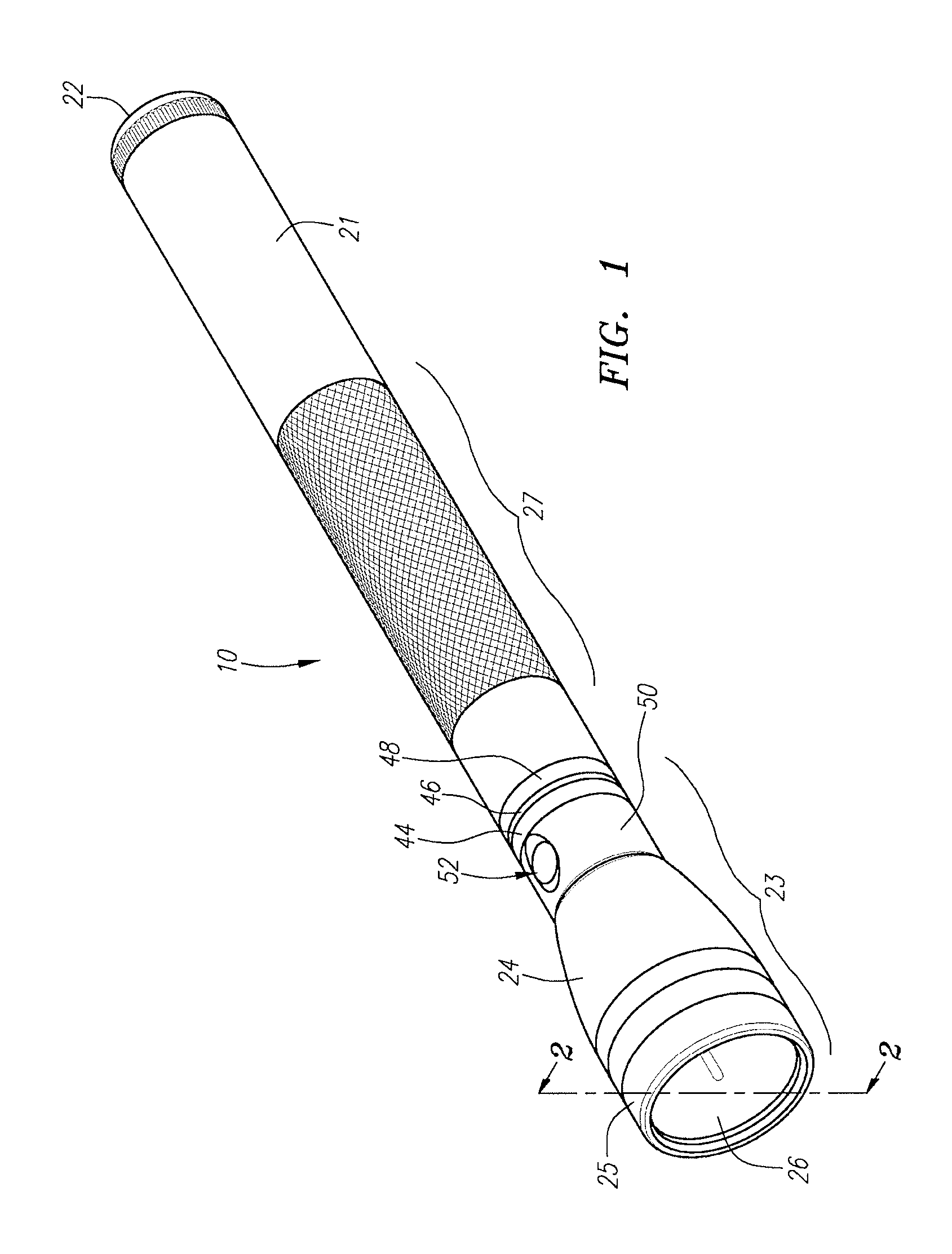Circuitry for Portable Lighting Devices and Portable Rechargeable Electronic Devices
a rechargeable electronic device and circuit technology, applied in the field of portable electronic devices, can solve the problems of stressing the filament, mechanical switches also do not permit automated or regulated modes of activating and deactivating flashlights, and prone to wear and tear
- Summary
- Abstract
- Description
- Claims
- Application Information
AI Technical Summary
Benefits of technology
Problems solved by technology
Method used
Image
Examples
Embodiment Construction
[0048]To facilitate the description of the invention, any reference numeral representing an element in one figure will represent the same element in any other figure.
[0049]A flashlight 10 according to one embodiment of the present invention is illustrated in perspective in FIG. 1. The flashlight 10 incorporates a number of distinct aspects of the present invention. While these distinct aspects have all been incorporated into the flashlight 10, it is to be expressly understood that the present invention is not restricted to flashlight 10 described herein. Rather, the present invention is directed to each of the inventive features of the flashlight described below individually as well as collectively. Further, as will become apparent to those skilled in the art after reviewing the present disclosure, one or more aspects of the present invention may also be incorporated into other electronic devices, including cell phones, portable radios, toys, as well as other non-portable lighting d...
PUM
 Login to View More
Login to View More Abstract
Description
Claims
Application Information
 Login to View More
Login to View More - R&D
- Intellectual Property
- Life Sciences
- Materials
- Tech Scout
- Unparalleled Data Quality
- Higher Quality Content
- 60% Fewer Hallucinations
Browse by: Latest US Patents, China's latest patents, Technical Efficacy Thesaurus, Application Domain, Technology Topic, Popular Technical Reports.
© 2025 PatSnap. All rights reserved.Legal|Privacy policy|Modern Slavery Act Transparency Statement|Sitemap|About US| Contact US: help@patsnap.com



